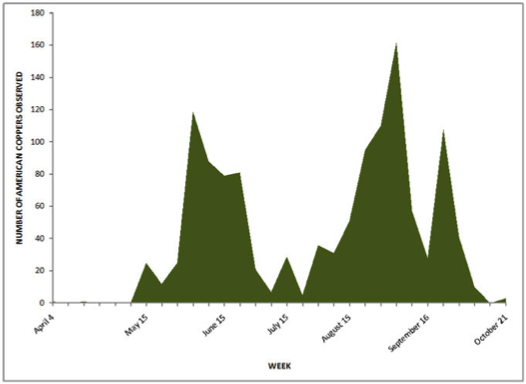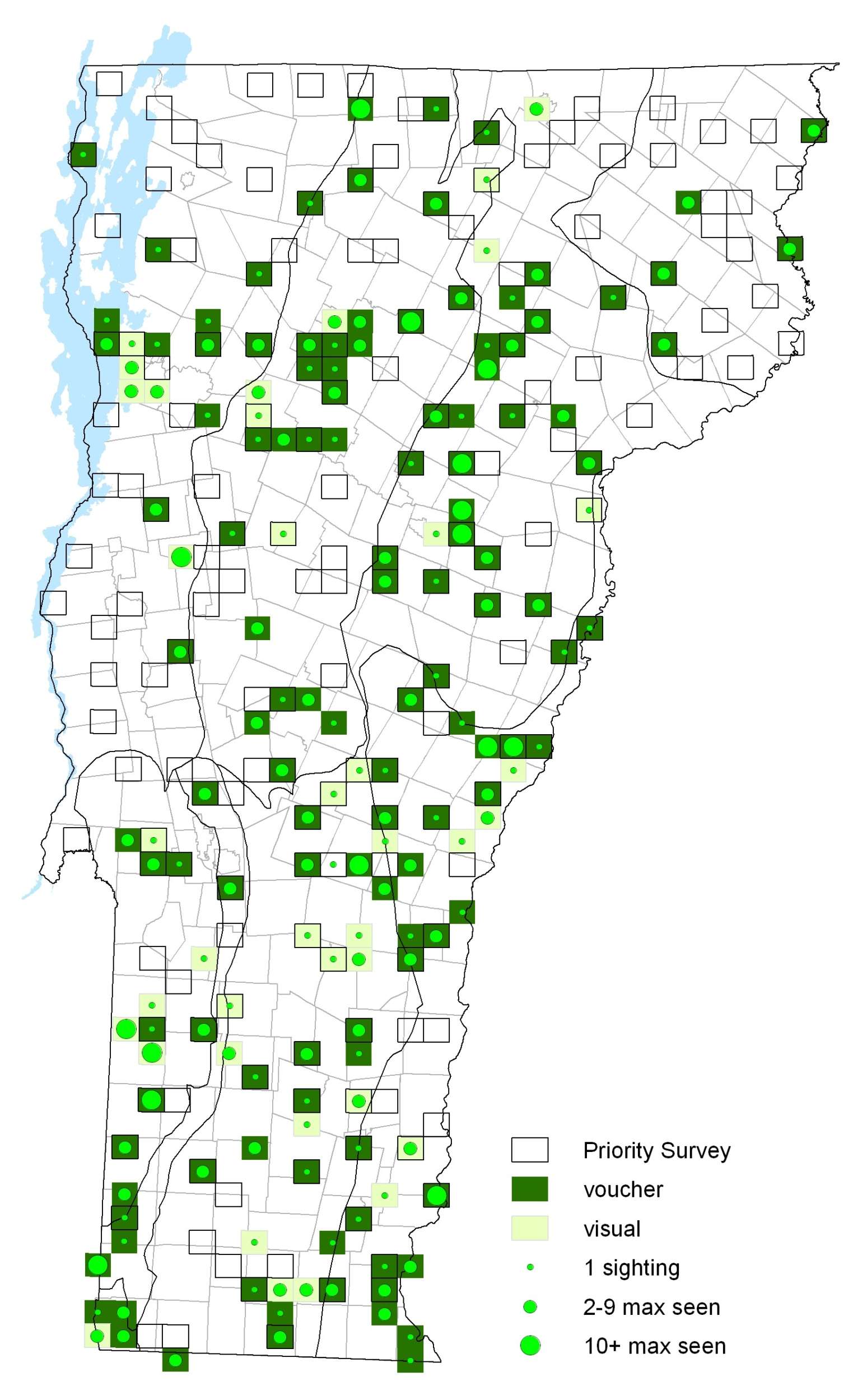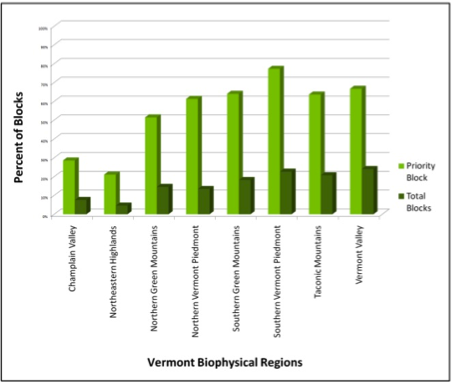|
Resident Conservation Status North American Range |
This beautiful, fiery colored butterfly is the flashiest of our eastern Coppers. Some authorities believe that the American Copper (Lycaena phlaeas americana) is the same species as the Eurasian Small Copper (Lycaena phlaeas phlaeas), and European colonists unintentionally introduced it to the Americas. This theory is based on the fact that they feed on introduced European plant species and are partial to disturbed habitats. Males are feisty and will readily defend territory while perching in wait for females. Eggs are laid singly on host plant stems or leaves. Young caterpillars chew holes in the underside of leaves; older larvae create channels in leaf tissue.
Identification
A small butterfly, only slightly larger than Bog Copper. Upper surface of forwing shiny, fiery orange-red with black spots; hindwing gray with orange-red outer margin. Underside gray; hindwing with submarginal row of orange-red zigzags.
Flight
At least two flight periods in Vermont, found from later April until widespread frost in October. Extreme dates: 4 April 2003 in Richford (J. Finkel) and 21 October 2007 in Bennington (K. Hemeon).
Distribution and Habitat
The American Copper is found throughout Vermont, but is perhaps more common southern regions. They prefer disturbed habitats and can commonly be found in urban parks, parking lots and pastures. Their primary larval host plant is the introduced European species, Sheep Sorrel (Oxyria acetosella) and they can sometimes be found on Curly Dock (Rumex crispus). Adults will nectar from a variety of flowers including White Clover (Trifolium repens) and Buttercup (Ranunculus).







